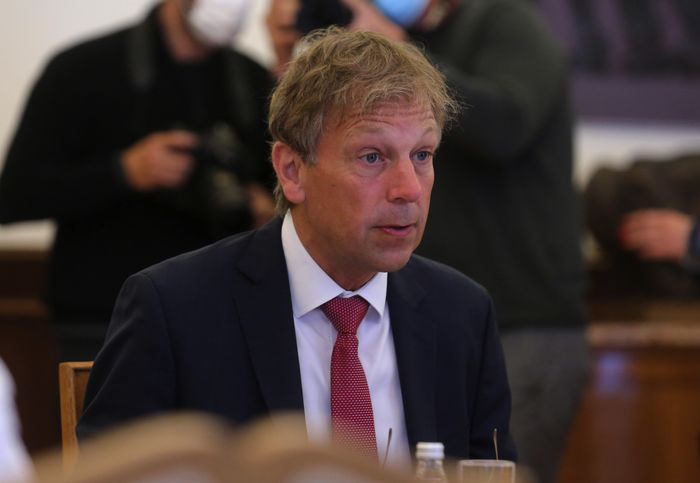Snarled supply chains are giving new impetus to Rio Tinto RIO 0.52% PLC’s efforts to produce minerals essential for modern technologies, starting with mining sludge from a giant copper pit in Western U.S.
Waste produced at Rio Tinto’s Kennecott mine near Salt Lake City, Utah, contains a clutch of critical minerals that have long been overlooked by global miners in favor of copper and commodities that can be produced at scale and sold into markets with a deep pool of investors. Now, these lesser-known minerals are becoming more valuable as the U.S. and its allies worry about security of supply amid geopolitical tensions and disruptions in exporting countries due to the pandemic and a power crunch.
Recent months have seen worsening shortages of some commodities, including magnesium used by the global automotive industry, resulting in a surge in prices. Earlier this year, President Biden ordered a review of America’s supply chains, including for minerals critical to the economy and national defense.
“Suddenly you see some pretty extreme demand for certain things,” Chief Executive Jakob Stausholm said in an interview.
Rio Tinto is building a plant at Kennecott that will recover tellurium, a critical mineral used in solar panels, from ore that has been dug up for its copper. The U.S. relies on imports of tellurium, including from China, which dominates global production.
But the company wants to go further at Kennecott, which accounts for nearly 20% of U.S. copper output. Rio Tinto is examining capturing more of the minerals when ore is processed for copper as a first step before potentially recovering them from waste, known as tailings. Still, it is a challenge for producers to keep costs down as the minerals are typically found in small quantities.
By linking efforts to recover critical minerals to gummed-up supply chains, Mr. Stausholm is signaling both the risks to economies that rely on commodity imports and the opportunity for companies that can help to fill supply gaps. It also points to a change in strategic thinking by global miners such as Rio Tinto, which have spent the past decade investing in vast mines churning out a narrow group of widely used commodities such as iron ore rather than produce materials for niche markets.
In 2018, the Interior Department designated 35 minerals as critical to the economy and national defense, as part of a strategy to break America’s dependence on foreign materials. The list of minerals deemed critical by the U.S. government could grow as a review this year by the U.S. Geological Survey recommended giving other commodities the same classification, including nickel used in batteries.
A June report by the White House recommended federal agencies work with the industry and other stakeholders to expand production of critical minerals and processing in the U.S.

Rio Tinto CEO Jakob Stausholm.
Photo: Oliver Bunic/Bloomberg News
Mr. Stausholm, who is based in London, visited the Kennecott site in late September on a three-week trip to North America, where he also met with Biden administration officials involved in shaping climate and critical minerals policy, Rio Tinto said.
That visit highlighted that a network of waste ponds at the Kennecott mine contain nearly half of the 35 critical minerals prized by the U.S., Mr. Stausholm said. They include bismuth, rhenium and indium, which are needed for products including smartphones and medicines.
Rio Tinto could produce 10 critical minerals from the mine for sale, Mr. Stausholm said.
Like many global miners, Rio Tinto has boosted its profit by digging up metals and minerals needed by an industrializing China, such as iron ore. But rising concerns over climate change and the emergence of a wealthy consumer class in China are prompting mining companies to think about whether different commodities have better growth prospects.
Rio Tinto has been spending billions of dollars to expand its copper business and has increased bets on lithium, another critical material. The company is developing a lithium project in Serbia and this year started producing a battery-grade lithium from waste rock at a borates mine site in California. Still, those moves are dwarfed by the size of its iron-ore business, which accounts for more than 80% of its earnings.
Mr. Stausholm said the supply-chain crisis underscored the problems with individual or small clutches of countries dominating production of commodities that don’t have substitutes.
“It does highlight something around critical minerals—and you see that debate coming up in particular in the U.S., but also in Europe—in terms of: how dependent are you on other parts of the world?” he said.
Rio Tinto isn’t just looking to develop critical minerals production in the U.S. It is also assessing options in Canada and Australia, as the global transition to clean fuels accelerates, he said.
“It’s not about the very short term—you know, the 6-, 12-, 18-months Covid bottleneck,” said Mr. Stausholm. “It’s much more about: how can we do the energy transition without having such bottlenecks?”
Write to Rhiannon Hoyle at [email protected]
Copyright ©2021 Dow Jones & Company, Inc. All Rights Reserved. 87990cbe856818d5eddac44c7b1cdeb8








